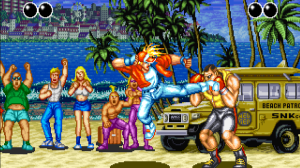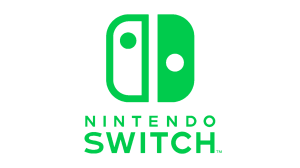Resident Evil 3: The Board Game is bringing the fan-favorite game and franchise to the tabletop courtesy of Steamforged Games, and the good news is it’s already funded on Kickstarter. There are plenty of new stretch goals and extra incentives to be revealed of course, but if you’ve been on the fence about backing the game, no worries because we think we can help a bit with that. ComicBook.com had the chance to chat with Creative Director and co-founder of Steamforged Games Mat Hart all about Resident Evil 3: The Board Game, including the big changes from Resident Evil 2: The Board Game, a new focus on narrative, making it feel like a true open world, and of course, the almighty Nemesis.
Videos by ComicBook.com
First up is the biggest new feature from Resident Evil 2, which is the expansion of the open world and the tension that players feel as they work their way through it, a hallmark of the franchise.
“So I think the biggest additional feature is obviously trying to capture a sense of that open-world feeling that you get as you’re going through the entire city,” Hart said. “So we spent quite a bit of time looking at the way the tension deck works and we really quickly realized that the tension deck doesn’t just work for a single location as in when you’re exploring through the police department, for example, but could also be applied to give you a citywide sense of ominous danger.”

Another change from Resident Evil 2 is the focus on the campaign mode right from the start of the game. That was last time too, but Steamforged noticed that the community really embraced the campaign mode despite it not being the only option, so they really expanded on it with the sequel.
“Did it surprise us? Maybe a little bit,” Hart said. “I mean we definitely played our cards in a way that gave us flexibility in either option, in either direction, and we knew that most board games are played as kind of single session. A lot of us play role-playing games and a lot of us really enjoy a campaign-style game so having that was always going to be the case. It was really gratifying to see how popular it was and I think it’s a combination of the fairly straightforward and simple campaign system we put in. It wasn’t a huge amount of bookkeeping and all these other aspects that you sometimes see with other campaign systems. I also think it ties in with the way people want to interact with the world of Resident Evil, and really it’s a narrative experience.”
“It’s not you’re just running and gunning and shooting zombies,” Hart said. “It is actually about the stories that you’re telling. The very best survival horror, comics and movies and TV shows are very much about people who are playing it and what’s happening to them as opposed to just focusing purely on the action.’
Injecting the puzzle-solving and backtracking from the games into the tabletop version introduces new complexities, both for the designers and the players, but they are ultimately worth it for a richer experience and one that puts more emphasis on player’s choices.
“The hardest thing was keeping an awareness in our mind of the various states that different locations could end up being in at various points in time,” Hart said. “Your actions actually matter and they do have an impact around the city, so if you choose to go to one location over another, well the location that you go to will evolve as will the location or locations that you didn’t go to. So I think that’s a really cool thing, but it’s only cool if we’re able to get the players to see it happening and understand the ramifications and repercussions of their decision making. That’s where it really becomes cool.”
“You can play this game multiple times, and while you can make the exact same decisions if you were to follow the same decision tree, because of the way the tension deck works, you would still have a different outcome each time,” Hart said. “So it’s almost unlimited in terms of possibilities, which I think is quite exciting because I’m looking forward to releasing the game into the community and then hearing all the crazy things that happen.”
Part of the experience is discovering new pathways and locations as you search through the world, but don’t expect it to be a cakewalk.
“So we try wherever possible with Resident Evil 3 to allow discovery to happen in play,” Hart said. “For example, the mission may be to get a key to a certain office, but we’re not going to tell you where the key is and we’re not necessarily going to tell you where the office is. You need to find that through play and that same principle extends into Resident Evil 3 where you will discover paths, and you will get given clues and information to tell you what the impact of that but it’s for you to fold that into the way that you want to play the game out.”
That discovery also extends to the endgame, and while certain aspects of the campaign will stay the same, there will be a variety of elements that will dictate whether or not you’re happy with the way things played out based on the decisions you make through the game.
So it’s absolutely shades of gray, though you either make it out of the city or you don’t, that’s your win/lose state,” Hart said. “But how and who comes with you and what state the city is left in and what other information you’ve managed to discover throughout the journey, these all give you multiple different endings.”

To get that ending though you’re going to need to defeat the one and only Nemesis, the lethal lab-created behemoth that follows Jill and the crew throughout the game. Nemesis is just as imposing in the board game as he is in the video game, and while he has been balanced, Steamforged did not tone him down in the least.
“Nemesis is a model that obviously needed to be adjusted,” Hart said. “What’s important to stress though is balancing doesn’t necessarily mean toning it down. What it means is stretching the distance between a weakness and a strength of a particular piece. So, we wanted Nemesis to feel as powerful and as terrifying as he is in the main video game and if we just toned down his damage or toned down the effects, then we would lose touch with that. So what’s important is to instead counterbalance that strength with a weakness and that then creates gameplay opportunity for players to take advantage of.”
Nemesis is pretty imposing as an antagonist, but any chance he’s playable?
“I don’t believe there are plans for that, but I would never say never,” Hart said. Now, while it’s not in the pipeline now, the question did get Hart thinking about what that would look like.
“I was just trying to imagine how fun that would be,” Hart said. “It’d be awesome for the person playing them but again, I suppose it depends on the weaknesses and it would create a cool experience and one of the things we see with the Resident Evil board game community is how overwhelmingly positive they are and how overwhelmingly enthusiastic they are for creating new content and I could definitely see that being more of a community-driven exercise, I would imagine.”
Speaking of the community, Hart said one of the game’s coolest additional features started out as a community idea.
“Actually I think the thing that really was an idea from the community that has gone into the Kickstarter products is the 3D doors that we did as an add-on, which were incredibly popular and we’ve seen some fantastic 3D stairwells and walls and we’ve been inspired by those as well,” Hart said. “So the 3D terrain that we’ve put in together for the Resident Evil 3 Kickstarter has definitely been influenced by some of the cool sculpting work that we’ve seen by the community.”
After playing a recent game that included 3D elements, I’ve gotta say adding even a few of them to your board can really enhance the experience, and Hart feels the same way.
“Yeah, it transforms it and I think the thing with board games especially is it’s incredibly easy for them to be just in a completely flat plane other than the minis that you use,” Hart said. “Anything that can enhance that sense of the world that you’re playing in and give you that almost isometric view of the real world I think is brilliant. You know, the walls in Resident Evil 2 weren’t the greatest, they really weren’t and that was definitely an area that we wanted to work on and improve anyway and then we saw what people were doing.”
We’ve got even more coming from our conversation with the Resident Evil 3 The Board Game team, but in the meantime make sure to check out the Kickstarter campaign here, and if you want to talk Resident Evil hit me up on Twitter @MattAguilarCB!








